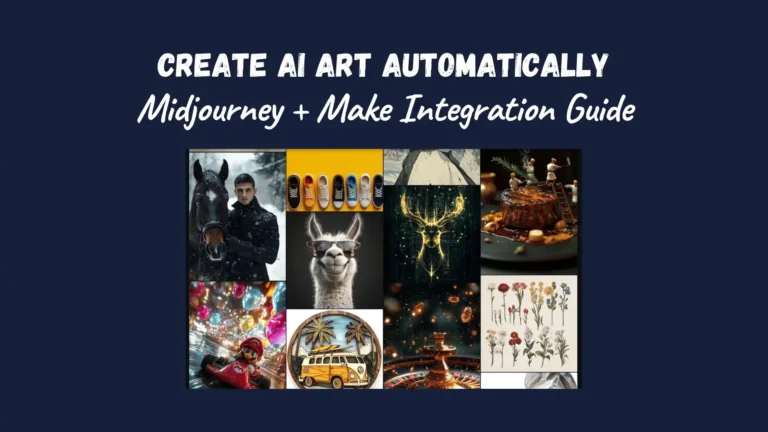What Are Make’s Data Iterators & Array Aggregators?
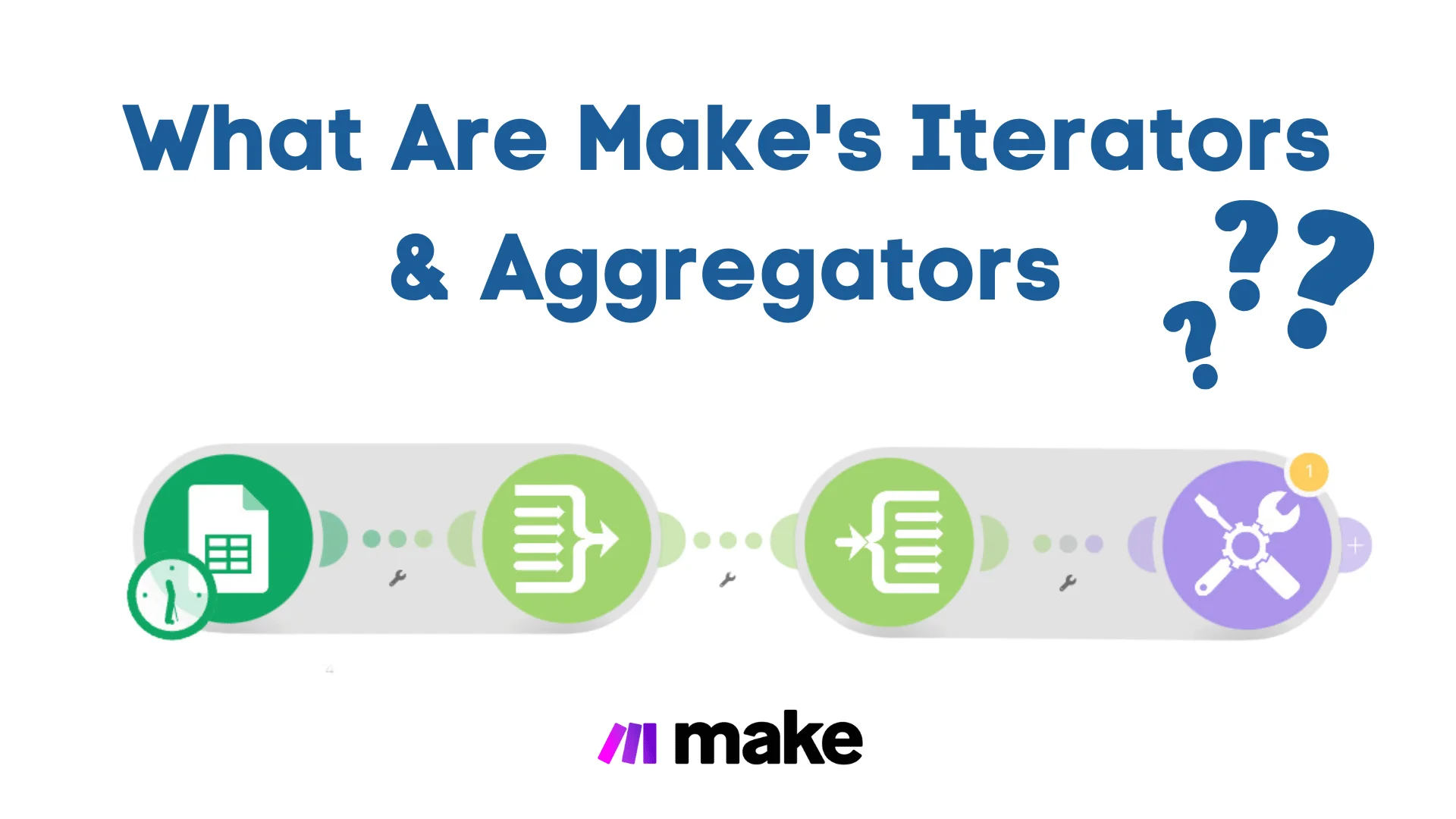
Have you ever struggled to handle multiple data sets in Make (formerly Integromat)? You’re not alone! Did you know that 67% of automation professionals consider data manipulation their most significant challenge? Data iterators and array aggregators are like the secret sauce that makes complex data handling a breeze. In this guide, we’ll dive deep into these powerful tools that can transform how you work with data in Make. Whether you’re a beginner or an experienced user, understanding these features is crucial for creating efficient automation workflows!
Understanding Data Iterators in Make
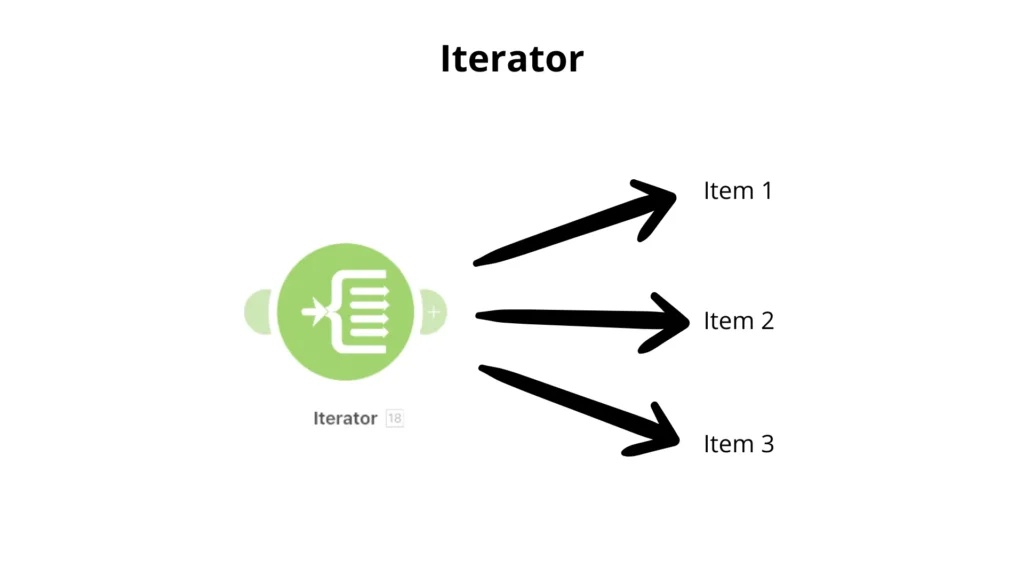
An iterator is a tool for breaking down a large set of data into smaller parts and processing them individually. It is useful when dealing with lists, tables, or data collections, making managing and automating tasks easier.
An Iterator module takes a data bundle (like a list of emails, names, or numbers) and splits it into individual items. This allows other modules to process each item separately. For example, if you have a list of email addresses, an iterator can break it down so that an email can be sent to each address individually.
What an Iterator Can Do:
- Break down lists – Splits extensive data sets into smaller, manageable pieces.
- Automate repetitive tasks – Ensures each item gets processed automatically.
- Improve efficiency – Helps systems work on one item at a time instead of handling everything simultaneously.
- Work with APIs – Useful for handling multiple responses from external services.
Using an iterator simplifies workflows and ensures data is processed correctly, making automation smoother and more effective.
Array Aggregators Explained
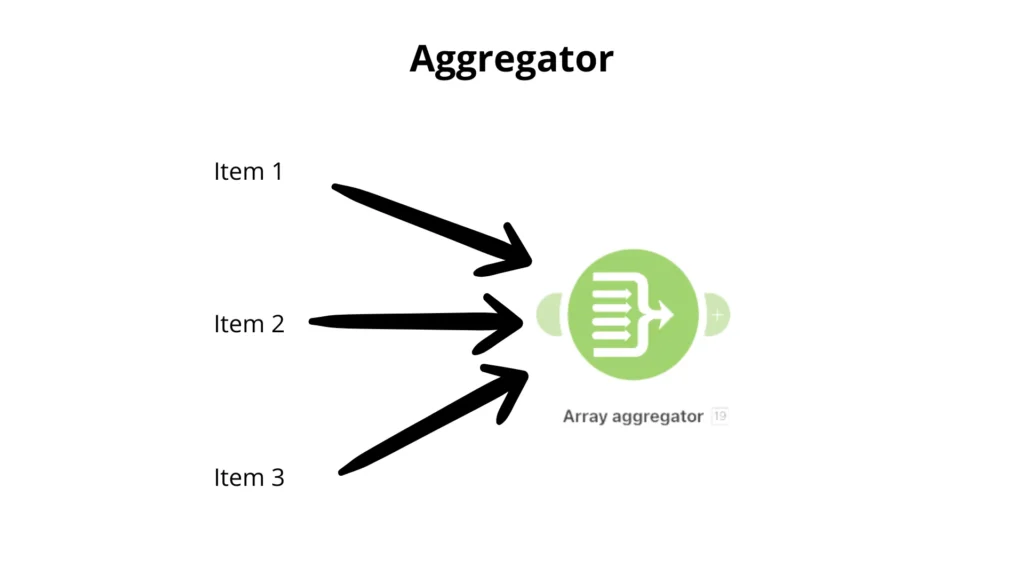
An aggregator is a tool that combines multiple pieces of data into a single bundle. It is useful when you need to collect and organize information before passing it to the next step in an automation process.
In Make, an Aggregator module gathers multiple items (like emails, invoices, or product details) and merges them into one structured dataset. This is the opposite of an Iterator, which splits data into smaller parts. For example, if you receive multiple form responses, an aggregator can combine them into a single report or summary.
What an Aggregator Can Do:
- Merge multiple items – Combines separate pieces of data into one structured set.
- Create summaries – Useful for generating reports or lists from multiple inputs.
- Prepare data for other modules – Ensures information is organized before processing.
- Work with APIs – Collects multiple responses and formats them into a single output.
Aggregators help manage and structure data efficiently, making automation workflows more organized and effective.
Combining Iterators and Aggregators
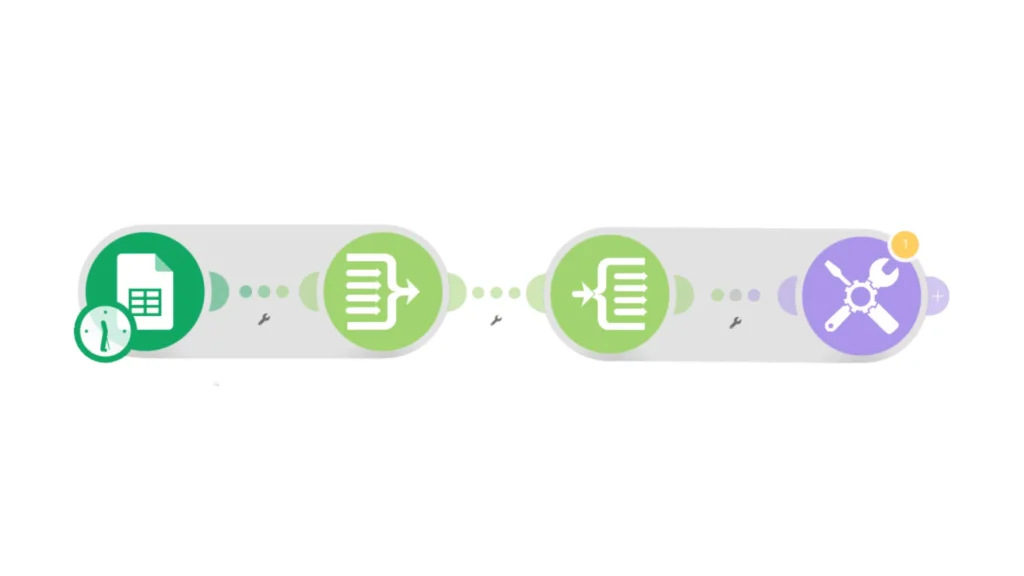
In automation workflows, iterators and aggregators work together to handle data efficiently. The Iterator breaks a dataset into individual parts, while the Aggregator collects those processed parts into a structured format.
For example, imagine you receive a list of customer orders. The Iterator splits each order to be processed separately (e.g., sending an invoice per customer). After processing, the Aggregator collects all the invoices and merges them into a single report.
How They Work Together:
- Iterator splits data – Breaks down lists into individual items.
- Each item is processed – Automation handles each piece (e.g., sending emails, updating records).
- Aggregator collects results – Merges the processed data into a structured output.
- Final output is used – The aggregated data can be saved, sent, or used in other steps.
This method ensures efficient data processing, prevents overload, and keeps workflows structured. By using Iterators and Aggregators together, automation becomes more flexible and powerful.
Conclusion
Now that you’ve mastered data iterators and array aggregators, you can confidently handle complex data processing tasks in Make! Remember to start simple and gradually build up to more complex implementations. Don’t forget to test thoroughly and monitor performance as you scale. Ready to transform your automation workflows?
FAQs
What does an Array Aggregator do in Make?
An Array Aggregator combines multiple data items into a single structured bundle, making it easier to process and store.
What does a Make Iterator do?
An Iterator breaks down a list or collection of data into individual items so each can be processed separately.
What is the difference between an Array Aggregator and an Iterator?
An Iterator splits data into smaller parts, while an Array Aggregator merges multiple items into one structured dataset.

Further Ressources
- How to Do Web Scraping in Make
- How to Build an Automated Time Tracking System on Make
- The Ultimate Guide to Data Mapping in Make
- How to Automate Employee Onboarding in Make
- How To Handle Errors In Make: A Complete Guide
- How To Use Variables in Make
- How to Automate Invoice Processing with Make
- How to Build a Customer Support System Automation in Make


